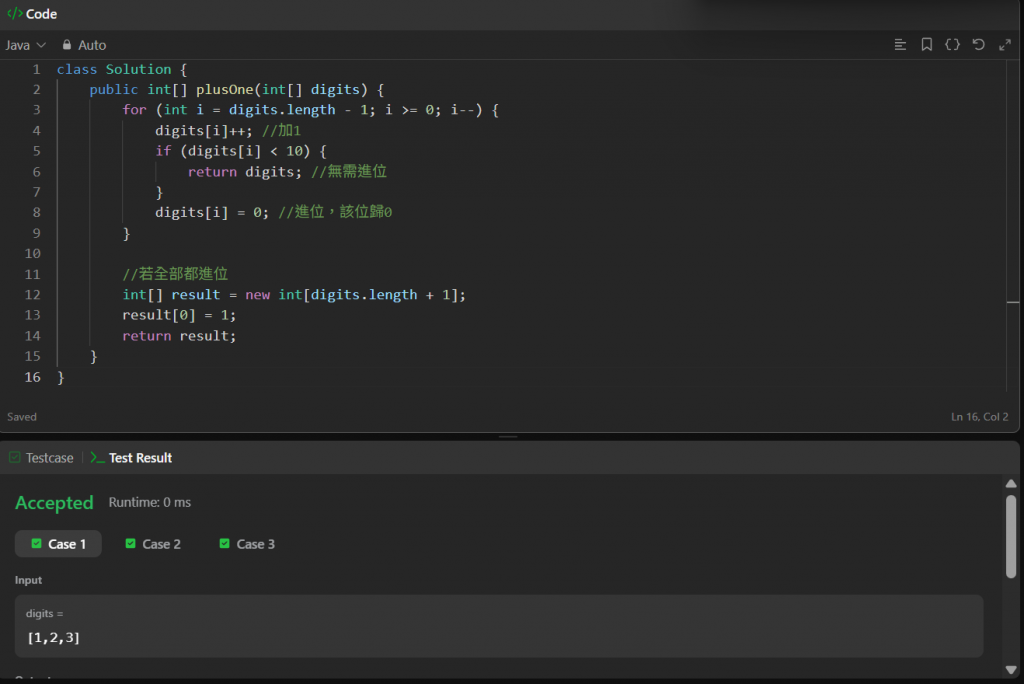You are given a large integer represented as an integer array digits, where each digits[i] is the ith digit of the integer. The digits are ordered from most significant to least significant in left-to-right order. The large integer does not contain any leading 0's.
Increment the large integer by one and return the resulting array of digits.
Example 1:
Input: digits = [1,2,3]
Output: [1,2,4]
Explanation: The array represents the integer 123.
Incrementing by one gives 123 + 1 = 124.
Thus, the result should be [1,2,4].
Example 2:
Input: digits = [4,3,2,1]
Output: [4,3,2,2]
Explanation: The array represents the integer 4321.
Incrementing by one gives 4321 + 1 = 4322.
Thus, the result should be [4,3,2,2].
Example 3:
Input: digits = [9]
Output: [1,0]
Explanation: The array represents the integer 9.
Incrementing by one gives 9 + 1 = 10.
Thus, the result should be [1,0].
解題思路:
題目給一個整數陣列digits,代表一個非負整數的每一位,要加上1,回傳新的數字陣列。
從尾巴開始加。
若結果小於10,直接結束。
若結果等於10,該位變成0,進位+1。
若最前一位也進位(例如999→1000),要建立新的陣列。
